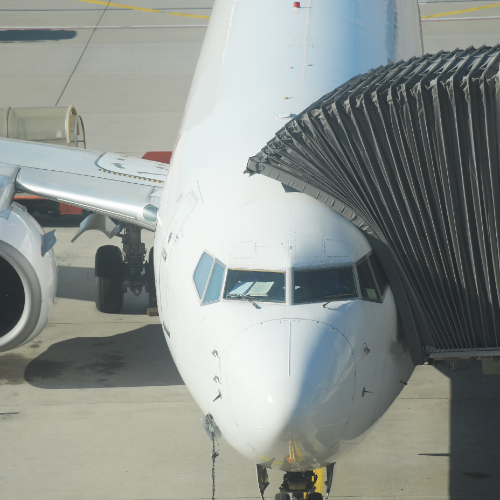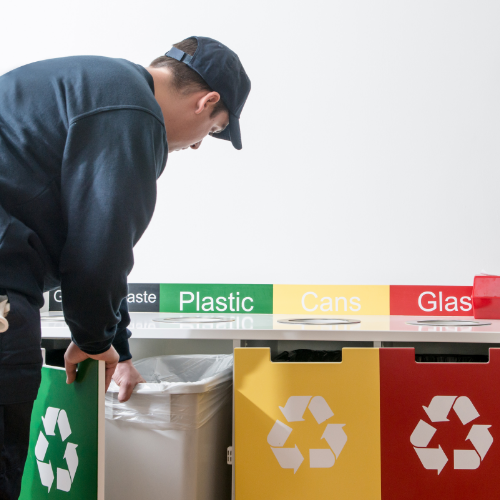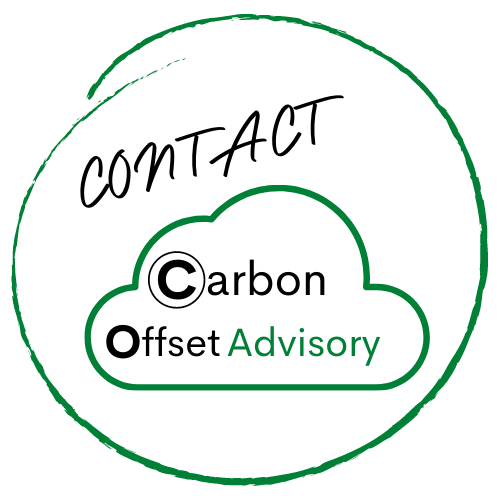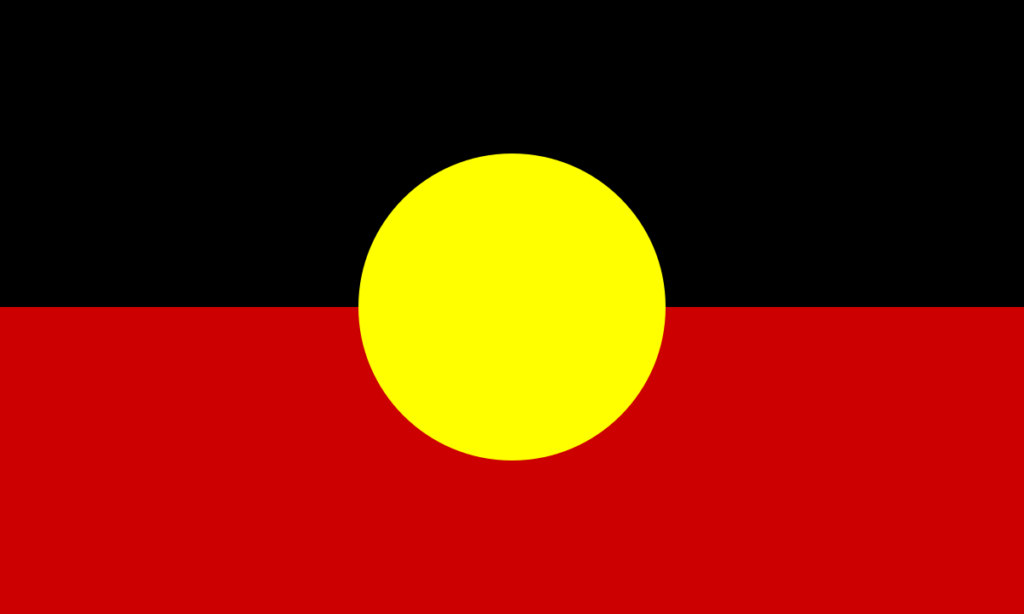SCOPE 3 EMISSIONS
Scope 3 is by far the most complicated for an organisation to dissect and report accurately. It is easy to become overwhelmed by the number of uncontrolled variables or difficulty in collecting credible data or suppliers who can supply data. Scope 3 is a process and the journey of calculating Scope 3 involves educating and partnering with suppliers who are committed to understanding their emissions as well.
Scope 3’s overarching goal is for buyer organisations to use that coercive position to decarbonize their supply chain through selective purchasing of greener options.
Read More
Scope 3 emissions are indirect greenhouse gas emissions other than those captured in Scope 2. They result from the organisation’s operations and are generated in the company’s wider economy. They can be described in the company’s value chain “as upstream” and “downstream” activities. Scope 3 upstream emission examples are business travel using methods not owned or controlled by an organisation, waste disposal and purchased goods & services. Scope 3 downstream emission examples are processing the orders of sold products, ongoing use of sold products and the end-of-life treatment of sold products.
Scope 3 is currently an optional reporting category and the greenhouse gas emissions are not reported under the NGER Scheme but can be used under Australia’s National Greenhouse Accounts.
Business Travel
Using transport that is not owned or controlled by your organisation includes:
Air travel
Business mileage using private vehicles
Rail
Taxis and Uber
Buses
Waste Generated in Operations
Waste comprises of landfill and wastewater. Solid waste releases emissions through the energy used to transport it to the landfill sites and from the ongoing biological breakdown of the material once on site. Emissions from wastewater treatment relate to the energy used transporting the water for processing, additional water required to reprocess the wastewater and the biological breakdown of the wastewater. These emissions mostly CH3 and NO2 are classed in Scope 3 as they are not operated or controlled by the organisation.
Purchased Goods and Services
The emissions specifically related to purchases made from the organisations supply chain are accounted for in Scope 3. Most organisations Scope 3 emissions generate the largest portion of their environmental impact. Understanding and measuring Scope 3 emissions enable an organisation to start making informed decisions regarding supplier selection and decarbonising their supply chain.
Employee Commuting
The emissions resulting from employee travel to and from work will depend of on the organisation’s geographic location and are accounted for in Scope 3. Public transport, car sharing and work from home cultures can all help reduce emissions.
Transportation and Distribution
Transportation and distribution emissions occur both upstream and downstream in the value chain and covers all transport (land, sea and air) , warehousing and logistics inputs.
Upstream refers to suppliers of the organisation. Downstream refers to the organisation’s customers. It also includes emissions from third-party warehousing along the supply chain.
Investments
The inclusion of investments is designed to capture the emissions for financial institutions but covers any organisations investments and is reported as Scope 3. Portfolio value and makeup change constantly, and these values are usually calculated at a set point in the reporting period for continuity over time.
For purposes of GHG accounting investments fall into four types:
Equity investments
Debt investments
Project finance
Managed investments and client services.
Use of Sold Products
The emissions from use of sold products is accounted for in Scope 3. Use of sold products refers to the use by consumers not business buyers. The greenhouse gas emissions from using a product can vary significantly, due to usage rate, life span and geographical location etc. They are complex to measure and calculate with an acceptable level of accuracy. As such organisations tend to avoid reporting on this.
As examples.
Reading a magazine produces no emissions but making the magazine does produce emissions.
Using a hair dryer requires significant emissions to use it and to manufacture it.
Buying snow ski gloves has a very small emissions footprint compared with the very large emissions generated from traveling to a ski resort, accommodation and running ski lifts.
End of life Product Treatment
End of life product treatment is a Scope 3 emission and covers products purchased by consumers. Ultimately it is treated in a similar fashion to business waste management. The difficulty in calculating the emissions generated arises due to inconsistencies in how consumers will deal with disposal or recycling of the product. Different global locations and the level of development influences the way people and local governments deal with waste disposal and recycling. Products need to be broken down into their subcategories of product, packaging, recyclability etc. Percentages to each area can then be allocated, and emissions calculated.
Product end of life consideration and reporting is designed to inform organisations on true emission values and enable them to make decisions focused on improving their products. They can address consumer recycling participation, products with low carbon footprints, recyclable products and recyclable packaging. This all leads to lowering waste to landfill and incineration.
Leased Assets
Organisations lease assets and then deploy these assets in their supply chain (upstream) and can also deploy assets to customer organisations (downstream). The treatment of leased assets is complicated and depending on the lease structure the resulting emissions can be included in Scope 1 or Scope 2.
Considerations include
The type of lease, operating lease or finance lease.
The organisational boundaries of the lessee and lessor.
Who has operational control and the sharing of equity.
Franchises
The franchise business model licenses other companies to sell or distribute another organisation’s goods or services within a specific location. Including cooperative branding, advertising, supply chain efficiencies and other scalable advantages. Depending on the arrangements between franchisor and franchisee, Scope 1 and 2 emissions may be the reporting responsibility of either party.
The emissions can be calculated using several methods. Option 1 is to report emissions for each franchise based on information collected at each site. Option 2 is to report emissions using existing information from a range of other franchises and make estimates based on equivalent size, revenue or location.
Read Less




Scope 3 Emissions




Scope 3 is by far the most complicated for an organisation to dissect and report accurately. It is easy to become overwhelmed by the number of uncontrolled variables or difficulty in collecting credible data or suppliers who can supply data. Scope 3 is a process and the journey of calculating Scope 3 involves educating and partnering with suppliers who are committed to understanding their emissions as well.
Scope 3’s overarching goal is for buyer organisations to use that coercive position to decarbonize their supply chain through selective purchasing of greener options.
Read More
Scope 3 emissions are indirect greenhouse gas emissions other than those captured in Scope 2. They result from the organisation’s operations and are generated in the company’s wider economy. They can be described in the company’s value chain “as upstream” and “downstream” activities. Scope 3 upstream emission examples are business travel using methods not owned or controlled by an organisation, waste disposal and purchased goods & services. Scope 3 downstream emission examples are processing the orders of sold products, ongoing use of sold products and the end-of-life treatment of sold products.
Scope 3 is currently an optional reporting category and the greenhouse gas emissions are not reported under the NGER Scheme but can be used under Australia’s National Greenhouse Accounts.
Business Travel
Using transport that is not owned or controlled by your organisation includes:
Air travel
Business mileage using private vehicles
Rail
Taxis and Uber
Buses
Waste Generated in Operations
Waste comprises of landfill and wastewater. Solid waste releases emissions through the energy used to transport it to the landfill sites and from the ongoing biological breakdown of the material once on site. Emissions from wastewater treatment relate to the energy used transporting the water for processing, additional water required to reprocess the wastewater and the biological breakdown of the wastewater. These emissions mostly CH3 and NO2 are classed in Scope 3 as they are not operated or controlled by the organisation.
Purchased Goods and Services
The emissions specifically related to purchases made from the organisations supply chain are accounted for in Scope 3. Most organisations Scope 3 emissions generate the largest portion of their environmental impact. Understanding and measuring Scope 3 emissions enable an organisation to start making informed decisions regarding supplier selection and decarbonising their supply chain.
Employee Commuting
The emissions resulting from employee travel to and from work will depend of on the organisation’s geographic location and are accounted for in Scope 3. Public transport, car sharing and work from home cultures can all help reduce emissions.
Transportation and Distribution
Transportation and distribution emissions occur both upstream and downstream in the value chain and covers all transport (land, sea and air) , warehousing and logistics inputs.
Upstream refers to suppliers of the organisation. Downstream refers to the organisation’s customers. It also includes emissions from third-party warehousing along the supply chain.
Investments
The inclusion of investments is designed to capture the emissions for financial institutions but covers any organisations investments and is reported as Scope 3. Portfolio value and makeup change constantly, and these values are usually calculated at a set point in the reporting period for continuity over time.
For purposes of GHG accounting investments fall into four types:
Equity investments
Debt investments
Project finance
Managed investments and client services.
Use of Sold Products
The emissions from use of sold products is accounted for in Scope 3. Use of sold products refers to the use by consumers not business buyers. The greenhouse gas emissions from using a product can vary significantly, due to usage rate, life span and geographical location etc. They are complex to measure and calculate with an acceptable level of accuracy. As such organisations tend to avoid reporting on this.
As examples.
Reading a magazine produces no emissions but making the magazine does produce emissions.
Using a hair dryer requires significant emissions to use it and to manufacture it.
Buying snow ski gloves has a very small emissions footprint compared with the very large emissions generated from traveling to a ski resort, accommodation and running ski lifts.
End of life Product Treatment
End of life product treatment is a Scope 3 emission and covers products purchased by consumers. Ultimately it is treated in a similar fashion to business waste management. The difficulty in calculating the emissions generated arises due to inconsistencies in how consumers will deal with disposal or recycling of the product. Different global locations and the level of development influences the way people and local governments deal with waste disposal and recycling. Products need to be broken down into their subcategories of product, packaging, recyclability etc. Percentages to each area can then be allocated, and emissions calculated.
Product end of life consideration and reporting is designed to inform organisations on true emission values and enable them to make decisions focused on improving their products. They can address consumer recycling participation, products with low carbon footprints, recyclable products and recyclable packaging. This all leads to lowering waste to landfill and incineration.
Leased Assets
Organisations lease assets and then deploy these assets in their supply chain (upstream) and can also deploy assets to customer organisations (downstream). The treatment of leased assets is complicated and depending on the lease structure the resulting emissions can be included in Scope 1 or Scope 2.
Considerations include
The type of lease, operating lease or finance lease.
The organisational boundaries of the lessee and lessor.
Who has operational control and the sharing of equity.
Franchises
The franchise business model licenses other companies to sell or distribute another organisation’s goods or services within a specific location. Including cooperative branding, advertising, supply chain efficiencies and other scalable advantages. Depending on the arrangements between franchisor and franchisee, Scope 1 and 2 emissions may be the reporting responsibility of either party.
The emissions can be calculated using several methods. Option 1 is to report emissions for each franchise based on information collected at each site. Option 2 is to report emissions using existing information from a range of other franchises and make estimates based on equivalent size, revenue or location.
Read Less
Scope 3 Emissions
Scope 3 is by far the most complicated for an organisation to dissect and report accurately. It is easy to become overwhelmed by the number of uncontrolled variables or difficulty in collecting credible data or suppliers who can supply data. Scope 3 is a process and the journey of calculating Scope 3 involves educating and partnering with suppliers who are committed to understanding their emissions as well.
Scope 3’s overarching goal is for buyer organisations to use that coercive position to decarbonize their supply chain through selective purchasing of greener options.
Read More
Scope 3 emissions are indirect greenhouse gas emissions other than those captured in Scope 2. They result from the organisation’s operations and are generated in the company’s wider economy. They can be described in the company’s value chain “as upstream” and “downstream” activities. Scope 3 upstream emission examples are business travel using methods not owned or controlled by an organisation, waste disposal and purchased goods & services. Scope 3 downstream emission examples are processing the orders of sold products, ongoing use of sold products and the end-of-life treatment of sold products.
Scope 3 is currently an optional reporting category and the greenhouse gas emissions are not reported under the NGER Scheme but can be used under Australia’s National Greenhouse Accounts.
Business Travel
Using transport that is not owned or controlled by your organisation includes:
Air travel
Business mileage using private vehicles
Rail
Taxis and Uber
Buses
Waste Generated in Operations
Waste comprises of landfill and wastewater. Solid waste releases emissions through the energy used to transport it to the landfill sites and from the ongoing biological breakdown of the material once on site. Emissions from wastewater treatment relate to the energy used transporting the water for processing, additional water required to reprocess the wastewater and the biological breakdown of the wastewater. These emissions mostly CH3 and NO2 are classed in Scope 3 as they are not operated or controlled by the organisation.
Purchased Goods and Services
The emissions specifically related to purchases made from the organisations supply chain are accounted for in Scope 3. Most organisations Scope 3 emissions generate the largest portion of their environmental impact. Understanding and measuring Scope 3 emissions enable an organisation to start making informed decisions regarding supplier selection and decarbonising their supply chain.
Employee Commuting
The emissions resulting from employee travel to and from work will depend of on the organisation’s geographic location and are accounted for in Scope 3. Public transport, car sharing and work from home cultures can all help reduce emissions.
Transportation and Distribution
Transportation and distribution emissions occur both upstream and downstream in the value chain and covers all transport (land, sea and air) , warehousing and logistics inputs.
Upstream refers to suppliers of the organisation. Downstream refers to the organisation’s customers. It also includes emissions from third-party warehousing along the supply chain.
Investments
The inclusion of investments is designed to capture the emissions for financial institutions but covers any organisations investments and is reported as Scope 3. Portfolio value and makeup change constantly, and these values are usually calculated at a set point in the reporting period for continuity over time.
For purposes of GHG accounting investments fall into four types:
Equity investments
Debt investments
Project finance
Managed investments and client services.
Use of Sold Products
The emissions from use of sold products is accounted for in Scope 3. Use of sold products refers to the use by consumers not business buyers. The greenhouse gas emissions from using a product can vary significantly, due to usage rate, life span and geographical location etc. They are complex to measure and calculate with an acceptable level of accuracy. As such organisations tend to avoid reporting on this.
As examples.
Reading a magazine produces no emissions but making the magazine does produce emissions.
Using a hair dryer requires significant emissions to use it and to manufacture it.
Buying snow ski gloves has a very small emissions footprint compared with the very large emissions generated from traveling to a ski resort, accommodation and running ski lifts.
End of life Product Treatment
End of life product treatment is a Scope 3 emission and covers products purchased by consumers. Ultimately it is treated in a similar fashion to business waste management. The difficulty in calculating the emissions generated arises due to inconsistencies in how consumers will deal with disposal or recycling of the product. Different global locations and the level of development influences the way people and local governments deal with waste disposal and recycling. Products need to be broken down into their subcategories of product, packaging, recyclability etc. Percentages to each area can then be allocated, and emissions calculated.
Product end of life consideration and reporting is designed to inform organisations on true emission values and enable them to make decisions focused on improving their products. They can address consumer recycling participation, products with low carbon footprints, recyclable products and recyclable packaging. This all leads to lowering waste to landfill and incineration.
Leased Assets
Organisations lease assets and then deploy these assets in their supply chain (upstream) and can also deploy assets to customer organisations (downstream). The treatment of leased assets is complicated and depending on the lease structure the resulting emissions can be included in Scope 1 or Scope 2.
Considerations include
The type of lease, operating lease or finance lease.
The organisational boundaries of the lessee and lessor.
Who has operational control and the sharing of equity.
Franchises
The franchise business model licenses other companies to sell or distribute another organisation’s goods or services within a specific location. Including cooperative branding, advertising, supply chain efficiencies and other scalable advantages. Depending on the arrangements between franchisor and franchisee, Scope 1 and 2 emissions may be the reporting responsibility of either party.
The emissions can be calculated using several methods. Option 1 is to report emissions for each franchise based on information collected at each site. Option 2 is to report emissions using existing information from a range of other franchises and make estimates based on equivalent size, revenue or location.
Read Less







